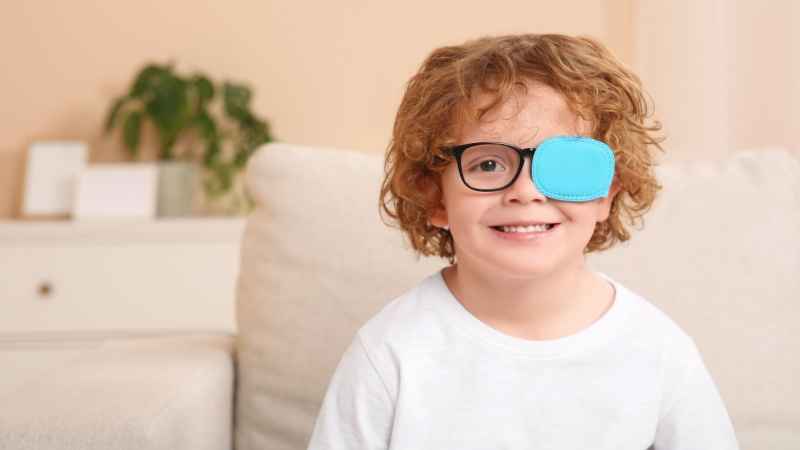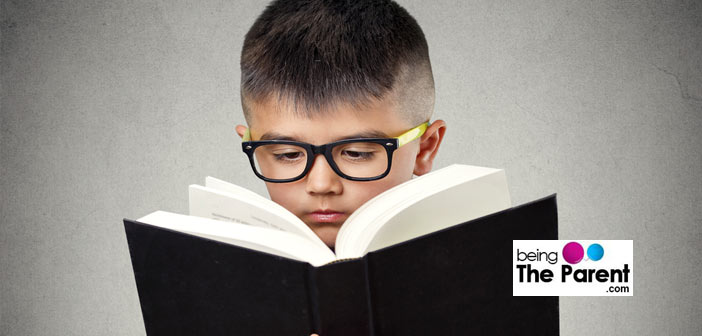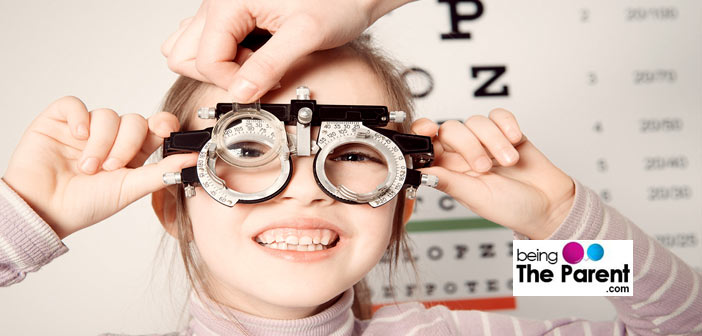
As parents in today’s world, we constantly worry that our children have too much screen time. Certainly those who wear glasses have feared at some point about whether the same fate awaits their children. The latest word is that myopia is affecting more and more children every day and at a younger age. 80% of the Asian population is now short-sighted with the majority of them developing it by the time they were 15 years of age.’Is it hereditary?’, ‘should I stock up on fish and carrots?’, ‘is there a cure?’ are some of the most common questions asked. Fortunately, there are precautions we can take.
What is Myopia?
Myopia, or short-sightedness as it is more commonly known, is a difficulty in seeing objects clearly from a distance. This is commonly due to the eyeball being slightly longer lengthwise (from front to back) than normal. We see when rays of light reflected from objects are focused on our eye. In the case of myopia, the light rays focus in front of the retina, light sensitive tissue in the eye, and not on it. This makes objects that are further away hazy and blurred.
Children usually develop a progressive form of myopia that stabilizes in their 20s when their eyes stop growing. However, young children sometimes do not even complain of nearsightedness as they do not figure out blurred vision from normal vision.
Causes and Symptoms of Myopia in Children
The exact reason for short-sightedness is still unknown. Yet, factors widely thought to contribute to this include:
- Hereditary factors – A child is thought to be more likely to develop myopia if one or both parents have it
- Lifestyle -He/she spends a lot of time engaged in near vision activities- reading, writing, screen time without taking a break
However, a child with short sightedness may complain of headaches, fatigue, strain, difficulty in seeing objects even a meter away. Progression of myopia also gets influenced by the way a person uses his eyes. Usually, the symptoms go un-noticed until the child complains of not being able to see the school black or white boards properly.

Often young children will not express any difficulty they face so a good indicator that your child is short-sighted is if he/she moves closer to objects to view them clearly (ex: sitting very close to the TV) or squinting. Hence, it is important to get children’s vision checked regularly – at 6 months, 3 years and before they start first standard, especially if someone in the family is myopic.
Treatment of Myopia in Children
At the risk of sounding glib, multiple research studies have found that one of the best treatments is to spend more time outdoors in the sun. In fact, in May 2013, a Danish study found that the amount of daylight that varied by season was related to the growth of the eyeball. In winter, the average growth was significantly longer than in summer.
However, no research has determined if specific physical activities, less near vision use or more direct sunlight helps reduce the risk of myopia.
If your child has been diagnosed with short sightedness, eyeglasses will be recommended. While it is still controversial whether progressive myopia can be slowed down, your doctor can offer various treatments:
-
- Atropine eye drops this has been used for many years with good short term results. In Taiwan, where 84% of children are myopic by the time they are sixteen, most doctors prescribe atropine eye drops for treatment. However, globally many doctors are reluctant to prescribe it because the long-term effects are unknown
- Multifocalcontact lenses Multi-focal contact lenses have different powers in different areas of the lens. A 2013 US study revealed that short-sighted children who wore multi-focal contact lenses on a daily basis over two years had 50% less progression than their counterparts who wore regular soft contact lenses.
Multifocal eyeglasses have also been tested but did not show any significant improvement as did in the results produced for multi-focal contact lenses

- Orthokeratology ‘Ortho-k’ involves using specially designed gas permeable contact lenses that are worn during sleep to temporarily correct short-sightedness. If these lenses are used at night, glasses and contact lenses aren’t needed during the day. This treatment is more frequently being used by doctors to control myopia progression in children. Multiple research studies from Japan, Hong Kong, Spain etc have shown lesser progression using ortho-k lenses than similar children who wore regular eyeglasses
Although there is no medical cure, there is no reason to panic. Since myopia typically develops during the early school years and usually progress more rapidly in pre-teens than in older teenagers, the best way to deal with myopia is to detect it early. Regular eye-check ups with and without reason are a must, starting from the pre-school years.
The only other recommendation would be to get your child out of the house more often and enjoy some fresh air and sunlight!

1 Comment
Heya i am for the first time here. I found this board and I in finding It really helpful & it helped me out a lot. I am hoping to present one thing again and aid others like you aided me.